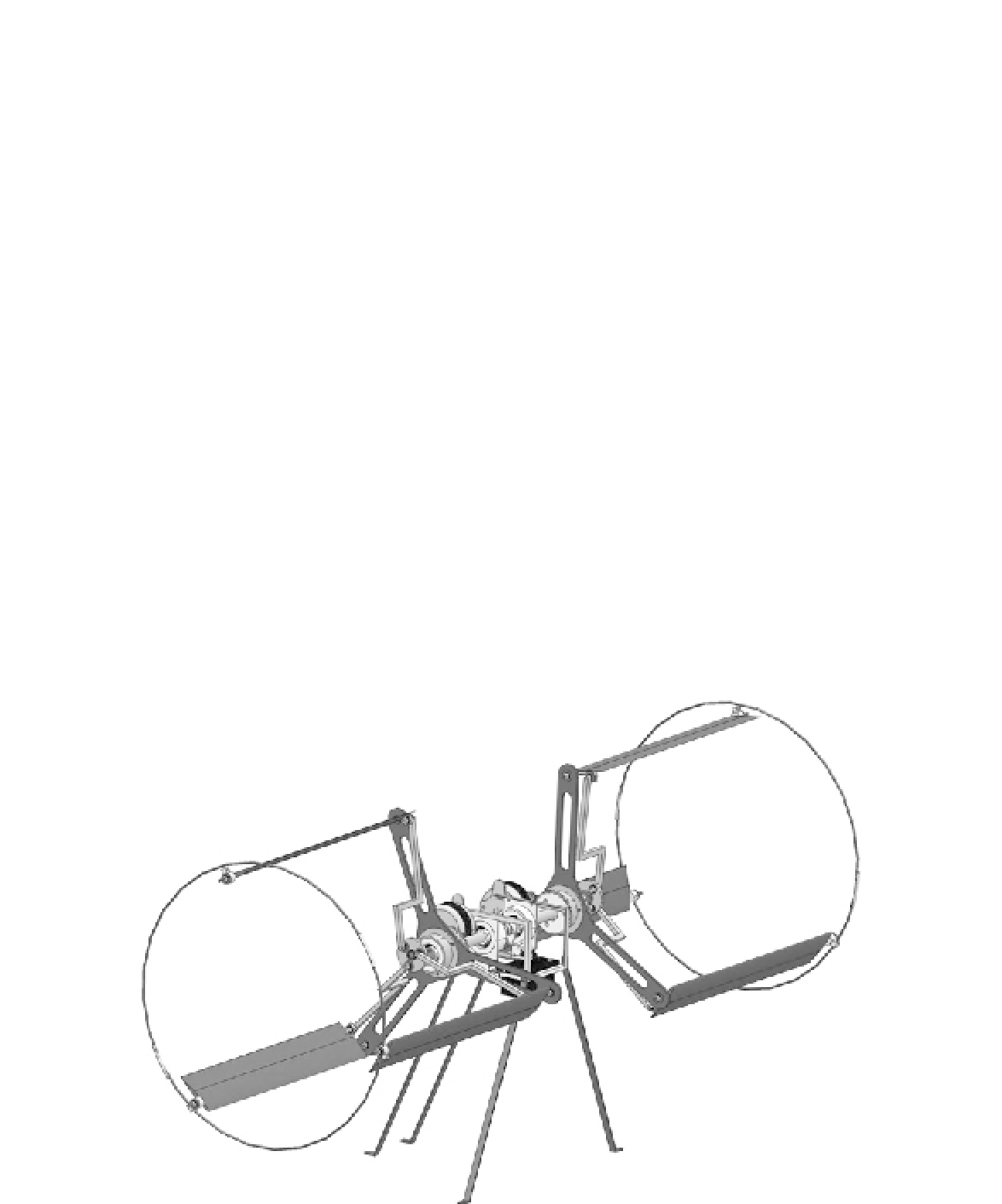Biomedical Engineering Reference
In-Depth Information
angle could be set from 0° to 40°. This translated
into a reduced frequency of around 0.167, which
is considered highly unsteady. A time-domain
formulation based on the Wagner's function, in
conjunction with downwash predicted based on
momentum theory, was used to predict the
thrust and torque of the rotor. Good agreement
with measured thrust was observed, but there
was some discrepancy with measured torque.
These discrepancies were attributed to an over-
simplification of the flowfield, especially through
the central part of the rotor. The power loading
at low thrust settings was observed to be com-
parable to that of a conventional helicopter rotor
of the same diameter and asymptoted to a lower
value at high thrust settings.
Based on experimental results, a micro-aerial
vehicle powered by two six-inch-diameter
cycloidal rotors was designed (
Figure 5.20
). The
total mass of this vehicle was around 250 g and
the rotor speed was around 1,650 rpm.
Benedict
et al
.
[76, 77]
performed further exper-
imental studies on a cycloidal rotor of the same
size, with the goal of optimizing the performance
of the cycloidal rotor MAV. The effects of number
of blades (ranging from two to six),
maximum pitching amplitude, and airfoil camber
were investigated. Improved performance was
achieved with a larger number of blades, higher
pitching amplitude, and uncambered airfoils.
Particle image velocimetry (PIV) measurements
indicated a high degree of wake skewness as well
as significant rotational flows inside the cycloidal
rotor. Aeroelastic modeling of a cycloidal rotor
using nonlinear finite elements and multibody
simulations with different inflow models
[78]
indicated that the wake skewness and resulting
side force arises from the mechanical linkage as
well as a phase lag due to unsteady aerodynamic
effects. Torsional deformations were shown to
decrease the thrust produced. Further experi-
mental studies on the blade airfoil profile and
FIGURE 5.20
Conceptual twin cycloidal rotor MAV.

